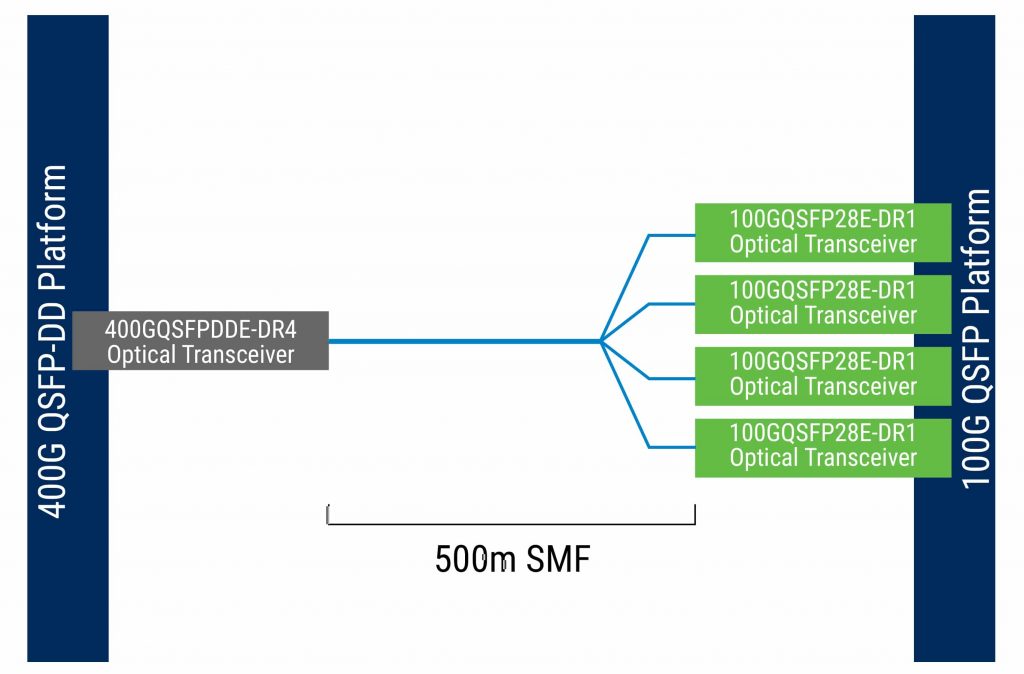What’s New in 400G Optical Transceivers
Posted by William Yue on Feb 12, 2020

A few months ago, we launched our portfolio of 200G and 400G optics, concentrating on shorter distances for core network and data center applications. As this exciting new technology evolves, our portfolio will expand with it to ensure you have all the best solutions available. Here are some of our latest additions.
400G to 4x100G: The Magic of Single Lambda
Optical interfaces typically achieve higher data rates through the use of multiple lanes. We saw this when 100G transceivers were introduced, first with the CFP SR10 (10 lanes of 10Gbps), then subsequently with 4x25G interfaces. These are included in the most common QSFP28 transceivers today. Now that PAM4 modulation has made single-lane 100G possible, upgrading from 4x25G to 4x100G is now a reality.
The most cost-effective way to achieve this is with 100G single lambda transceivers. These optics contain a gearbox chip that can convert the “legacy” 4x25G electrical interface to a 1x100G optical signal over 1310nm single-mode fiber, as shown below:

These transceivers can be connected to their 400G counterparts by using QSFP-DD DR4 and QSFP-DD DR4+ optics:


Other 400G Additions
We have added a second option for 10km applications. In addition to our LR8 QSFP-DD transceivers, we are introducing a QSFP-DD LR4. Like the 100G single lambda optics shown above, the LR4 contains a gearbox chip to convert 8 lanes of 50G PAM4 to 4 lanes of 100G, utilizing the CWDM-4 wavelength plan (1270nm-1330nm) that was previously used in many 100G QSFP28 transceivers, as shown below:

Ready to see what these optics can do for your network? Contact us today for more information.